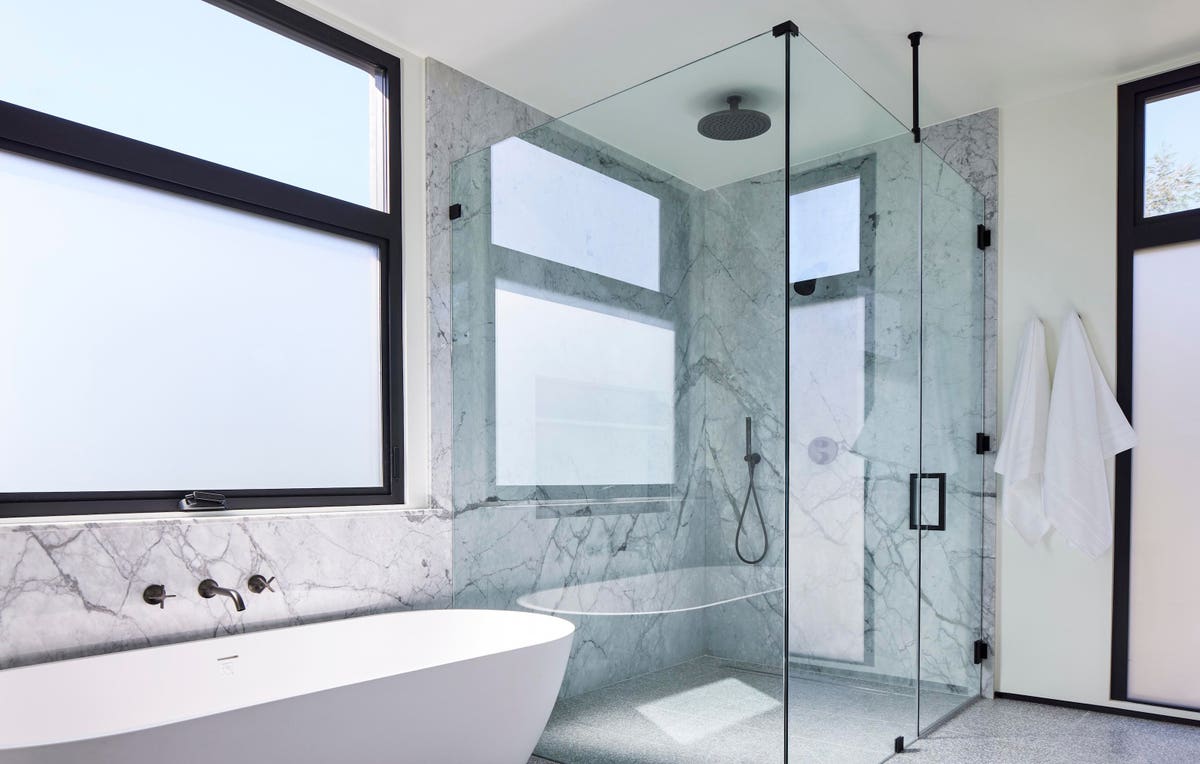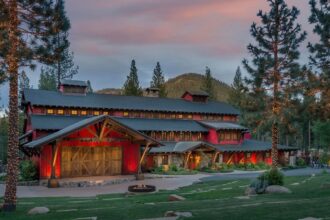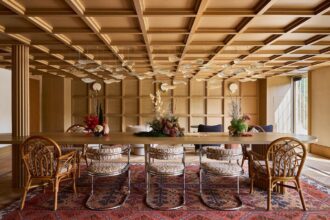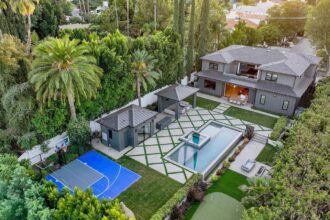If it seems like the primary bathrooms you’re seeing lately are getting larger and more luxurious, it’s not your imagination! According to home improvement platform Houzz in its 2023 U.S. Bathroom Trends Report, they are indeed growing in size. They’re also getting more costly and upgraded with wellness design features.
One in five homeowners (22%) are enlarging their primary suite’s bathroom during remodels and nearly three in five bathrooms (59%) now measure 100 square feet or more, the report notes. (Compare this to a standard hall bathroom, which often measures five by eight feet for a total of 40 square feet.)
Bigger Budgets
Homeowners are including premium features in these renovated bathrooms and, not surprisingly, investing significantly more on their projects. “The national median spend for primary bathroom remodels jumped 50% to $13,500 from $9,000 in 2022,” the report reveals. “For those doing ‘major’ renovations, which include shower upgrades, median spend grew 33% year over year to $20,000. The median spend for primary bathrooms that are 100 square feet or larger is $25,000, compared with $15,000 for bathrooms smaller than 100 square feet,” Houzz notes.
This is part of a continuing trend, observes Marine Sargsyan, the platform’s staff economist. “This is the fourth consecutive year in which median spend has increased for primary bathrooms,” she comments, adding that these spaces are a continuing focus of homeowners seeking improved style and functionality. “They continue to invest in improvements out of necessity and future needs.”
A variety of factors, including ongoing interest in sustainability and aging concerns, are driving these changes, as both the report and responses of designers around the country in professional social media groups to it conclude.
“I’m getting calls from clients wanting to age in place,” shares Central Oregon area kitchen and bath designer Emily Cathcart. “They are planning ahead for staying long term in their homes. This is showing up in showers that are 20% larger, bidet toilets and grab bars, and budgets of $110 to $125,000, she writes in her group comment.
Cost Drivers
Westchester, New York area interior designer Sasha Drozdetski is definitely seeing costs increase, she writes. “For our project budget scope on primary bath renovations, since Covid, we’ve noticed a trend of spending more on the master bathroom to upwards of $50,000-plus.” Her clients are investing in smart toilets and air tubs along with showers that are often 30% larger after the remodel.
Across the country, Pasadena, California-based designer Michelle Blemel comments, “Project budget scope on primary bath renovations in the Los Angeles Area are trending higher than average – $40,000-plus for average size (eight by 10 foot) baths.”
While footprint increases – which often require borrowing space from adjacent rooms, closets or hallways – drive up costs, adding amenities do the same. In addition to shower upgrades, Blemel is including specialized vanities with built-in charging stations and upgraded LED mirrors with anti-fog and dimming features, she says.
Philadelphia-based interior designer Nina Green shares, “If we are able to expand into an adjoining area, such as a closet or unused nook, we have expanded the bathroom from 20% to 50%.” When expansion isn’t possible, she removes seldom-used tubs and increases the shower within the existing bathroom footprint.
Seattle design-build firm co-owner Tristan Gary points to the addition of in-wall toilets, newly enclosed water closets, steam showers and enhanced lighting also driving budgets. “But I would also add that, above all, labor costs have risen exponentially and contribute the largest increase in primary bathroom costs,” she explains.
Shower Upgrades
Houzz reports that more than three in five homeowners (61%) increase the size of their shower, with about one in five of those households (20%) adding more than 50% to its size. Kitchen and bathroom designer Christine Kosoff definitely sees that in her Denver practice, she says. “Many of the older homes in our area were built with three foot by three foot showers. Clients are doubling the size to include a bench.”
These spaces are not only getting larger, they’re also getting more luxurious, according to both Houzz and the designers I surveyed. Houzz reports: “More than two-thirds of homeowners incorporate premium features in their upgraded showers (67%), including rainfall shower heads, dual showers, body sprayers and thermostatic mixers (54%, 20%,16% and 14%, respectively).”
Green is also adding built-in benches and other amenities: “Our larger showers have more of a room/spa-like feel and may even include privacy windows, multiple niches and specialty built-ins, and custom shower glass and doors.” One notable aging-friendly feature she cites: “I also always include a grab bar!”
Gary cites steam with aromatherapy, chromatherapy and music, along with lighted niches, benches and second handheld shower heads in her client showers. Curbless showers are also enhancing aging-friendly accessible bathrooms, as are bidet functionality in toilets, both of which make it easier for someone with mobility challenges to handle their own hygiene.
DIY Not
As bathroom projects get larger, more sophisticated and include more premium features, the urge to do it yourself decreases. The Houzz report shows that 86% of homeowners are calling on professionals, rather than attempting to handle them on their own.
This doesn’t surprise Cathcart, who observes, “They choose to work with a pro because they know they need help from a professional to plan for health and safety as they age in place. They also want help visualizing how their new bathroom will look with construction drawings and rendering.” Not least of all, she points out, they want someone to pull together a team with the many trades involved in such a project.
Sarah C. Wilson in Washington, D.C. further notes that the type of client who takes on a project like this is often a busy professional with “no desire to DIY any projects. They understand that they are experts in their fields and so they are seeking experts in the field of design to curate the vision for them.”
Read the full article here










